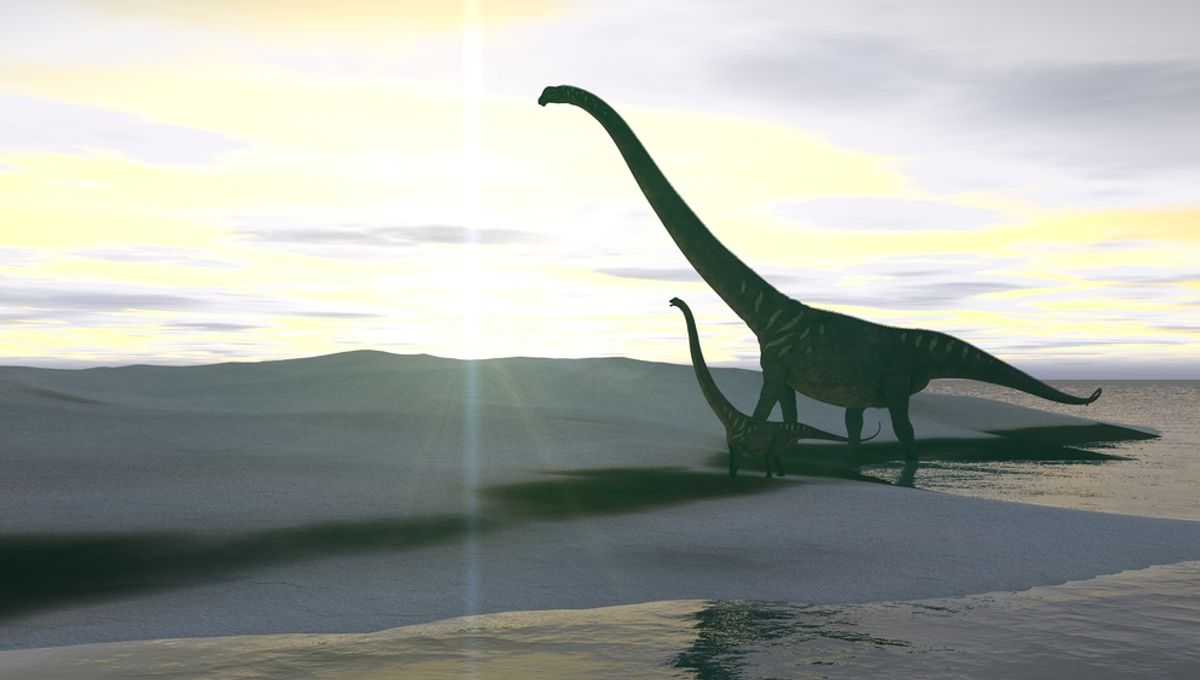
Dinosaurs have been defamed. Far from the ruthless, small-brained creatures often portrayed, a new study proposes they achieved a major advance in intellectual development 60 million years before our mammalian ancestors. Known as “visual perspective taking” it’s the capacity to recognize that not everyone sees the world the same way you do.
It’s hard enough to get into the minds of animals we interact with every day, although scientists certainly try. Establishing the thought processes of a creature that died out at least 65 million years ago might seem like a fruitless task. Nevertheless, it’s a challenge a team at Lund University has taken on. In a new paper, they claim to know a little of what dinosaurs were thinking.
A crucial stage in most people’s mental development occurs between 18 months and 2 years old when they realize others can see things they can’t. Known as “visual perspective taking”, it represents the understanding that how we see the world depends on our location. A more advanced version, which usually starts around age 3 involves recognizing that if someone is looking at something you can’t see you may need to move to work out what the fuss is about. It’s considered an important step developmentally and evolutionarily towards a “theory of mind”, the understanding not everyone thinks the way we do.
Obvious as this may seem to us, it’s worth considering how easily it breaks down. We instinctively point things out, even though a moment’s thought would allow us to realize the object is obscured from another’s perspective. It’s not surprising then so many animals don’t seem capable of the same thing.
Some animals have been found capable of visual perspective taking, including lots of primates. Dogs can do it and so can wolves, proving it’s not just a consequence of hanging around with us. Ravens have also been shown to have the capacity, proving it’s not purely a mammalian thing. No doubt that’s not a complete list – most species remain untested, but it wasn’t a surprise when Professor Mathias Osvath showed alligators will sometimes try to see what another alligator is looking at, but fail more advanced perspective taking tests.
Yet when Osvath and co-authors tested some bird species thought to be intellectually quite undeveloped – including the notoriously stupid emu – all passed with flying colors (even those that can’t fly). The birds would move at least their heads to avoid obstacles blocking their view of something a member of their own species was focused on. They also “checked back”, meaning when they couldn’t find the object they would look back into the observer’s eyes to make sure they had the right direction.
The fact visual perspective taking appears to be universal among the infraclass of birds the team tested, known as palaeognaths, suggests it dates at least back to the origins of the group. This occurred some 110 million years ago when the original palaeognaths were just another group of dinosaurs. Palaeognaths were chosen because they are considered the best surviving models for “paravian dinosaurs, such as dromaeosaurids and troodontids.”
Mammals probably acquired the same capacities far more recently. The last common ancestor of primates and dogs was 60 million years ago, and it is likely each developed the capacity independently after that.
“Early in my career, crow birds earned the nickname ‘feathered apes,’ due to numerous research findings that showcased their remarkable cognition. However, I’m beginning to question whether it would be more fitting to consider primates as honorary birds,” said Osvath in a statement.
Whether paleognaths’ dinosaur contemporaries were similarly capable is unknown, particularly in the case of species with no living descendants. The authors doubt the first dinosaurs had any more visual perspective taking than crocodilians, given their brains’ similarity to alligators. Who knows if you could fool a Tyrannosaurus by pretending to look at something that isn’t there?
Much as the discovery may hurt our mammalian pride, the authors think it reflects dinosaurs’ superior vision. Mammals, after all, were mostly nocturnal until the asteroid made it safe to come out in daylight, and visual perspective taking isn’t much use in darkness. They also think the extra neurons that make this possible probably developed in conjunction with the capacity to produce one’s own body heat.
The study is published open access in Science Advances.
Source Link: Some Dinosaurs Could See Others’ Point Of View Long Before Mammals Could